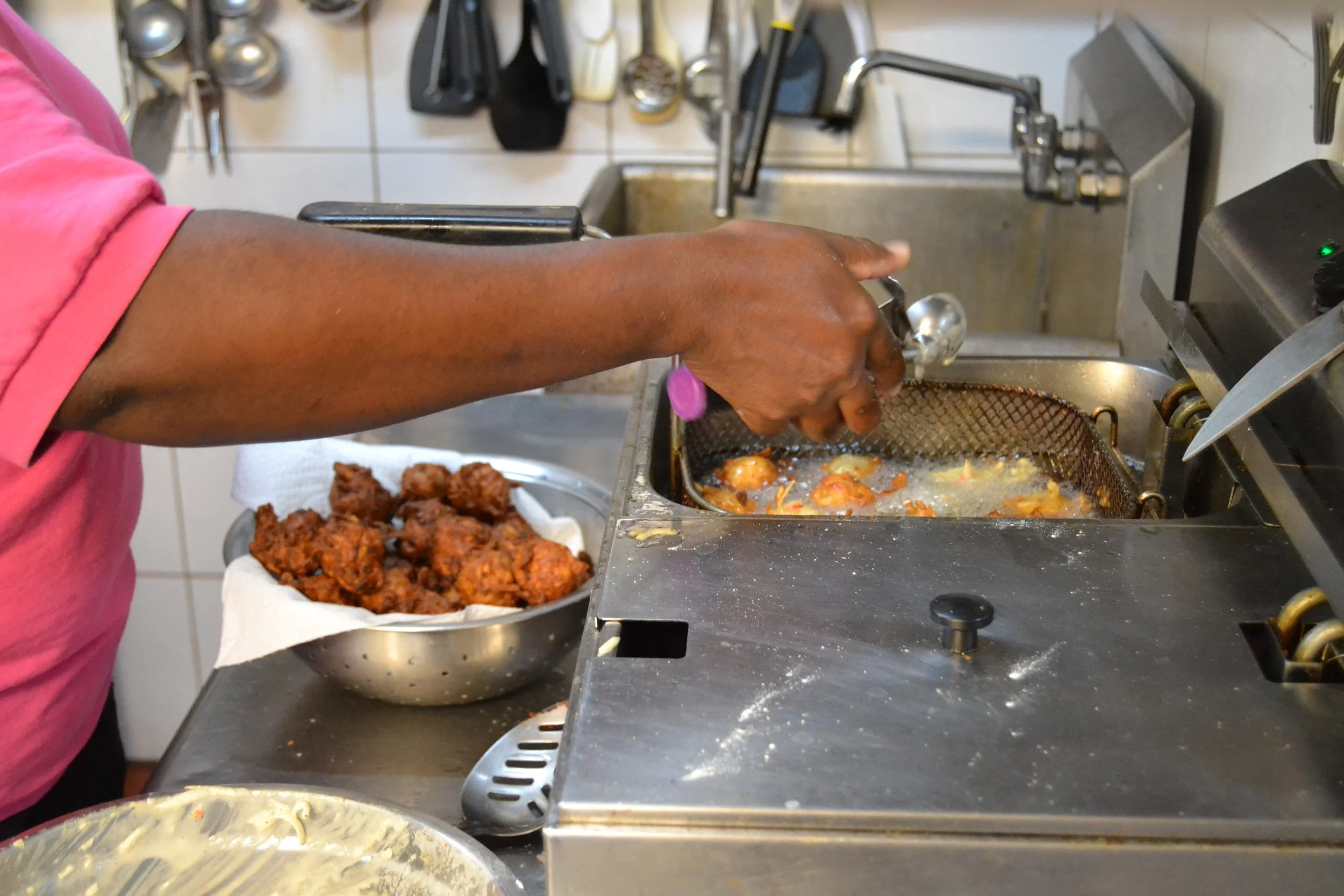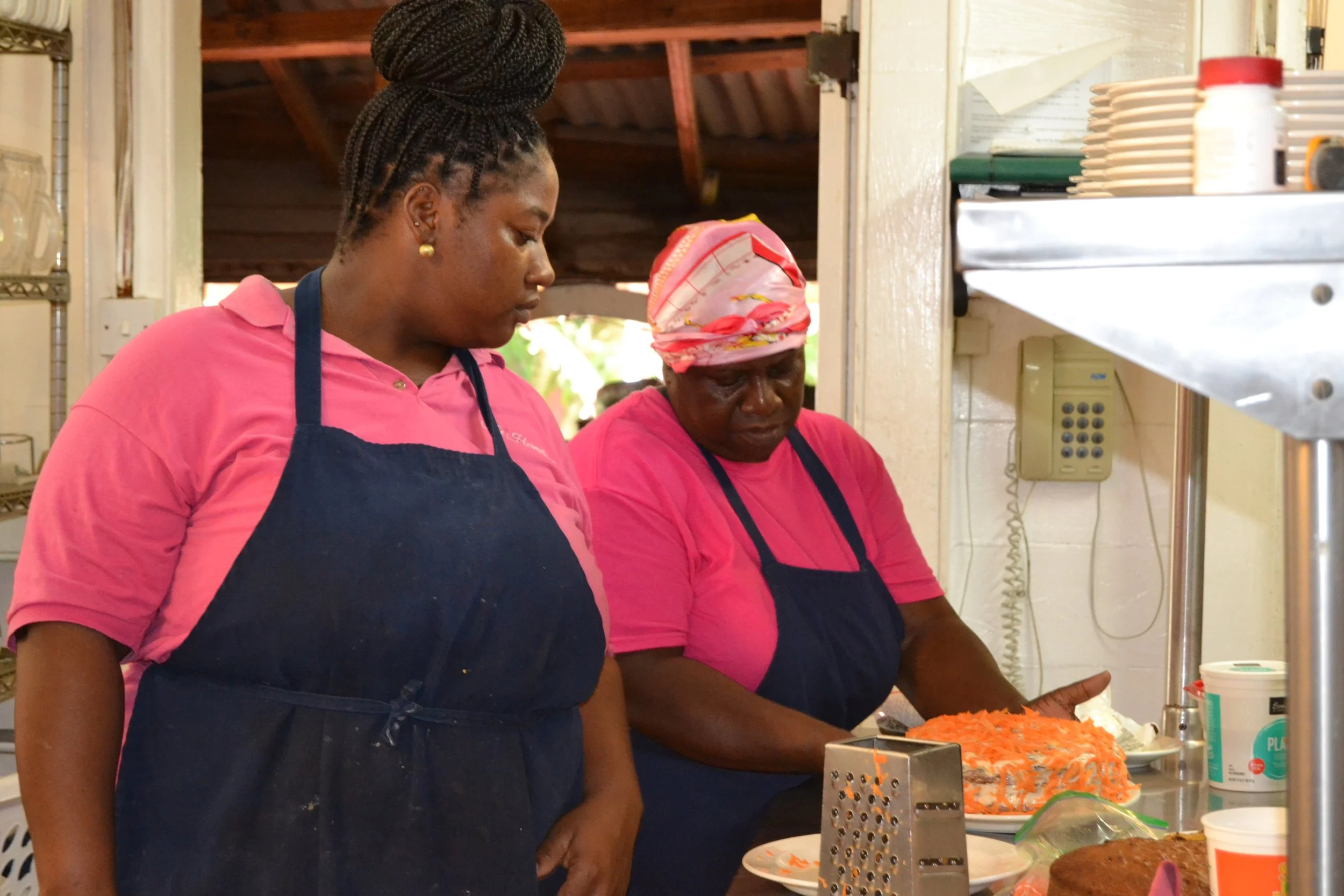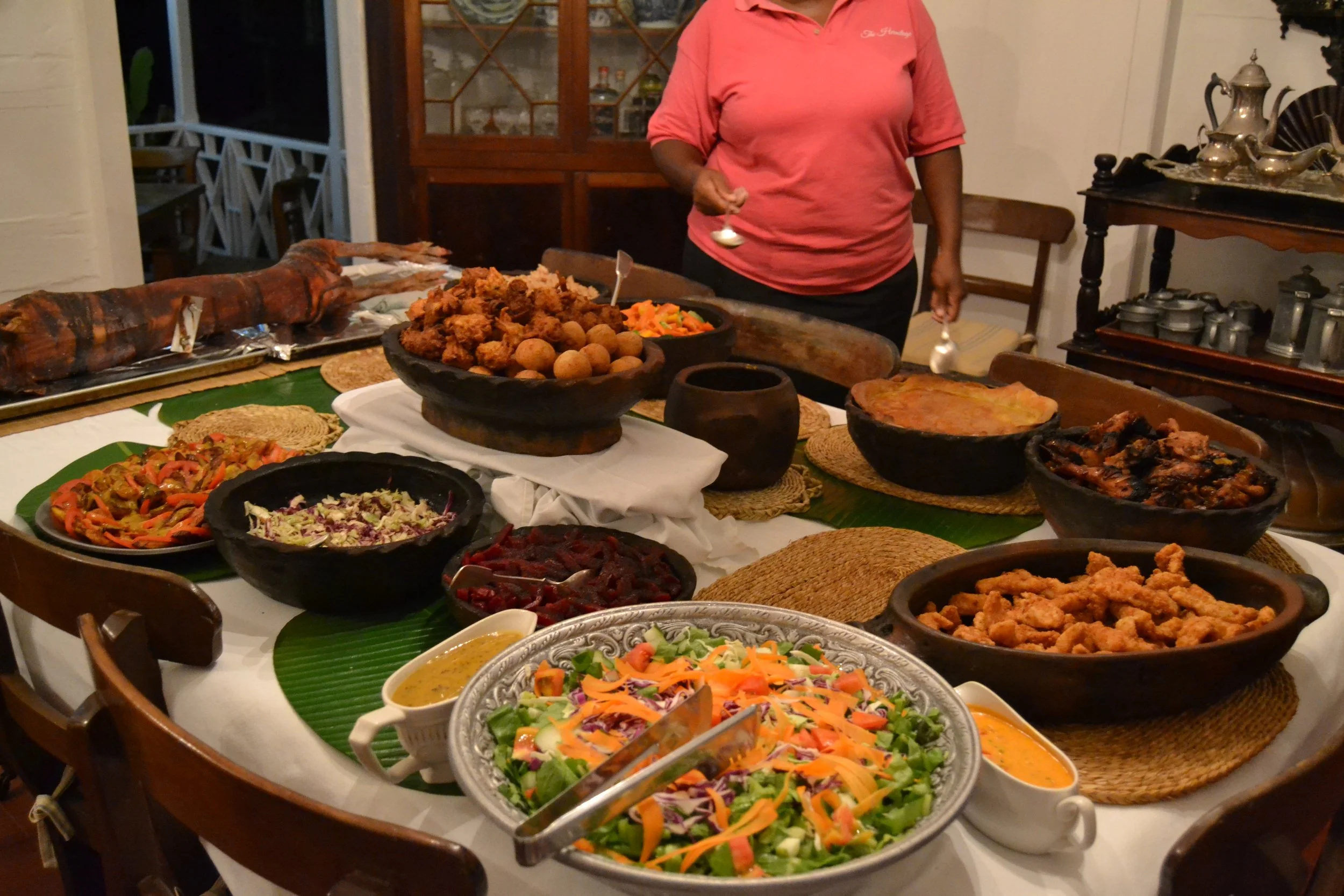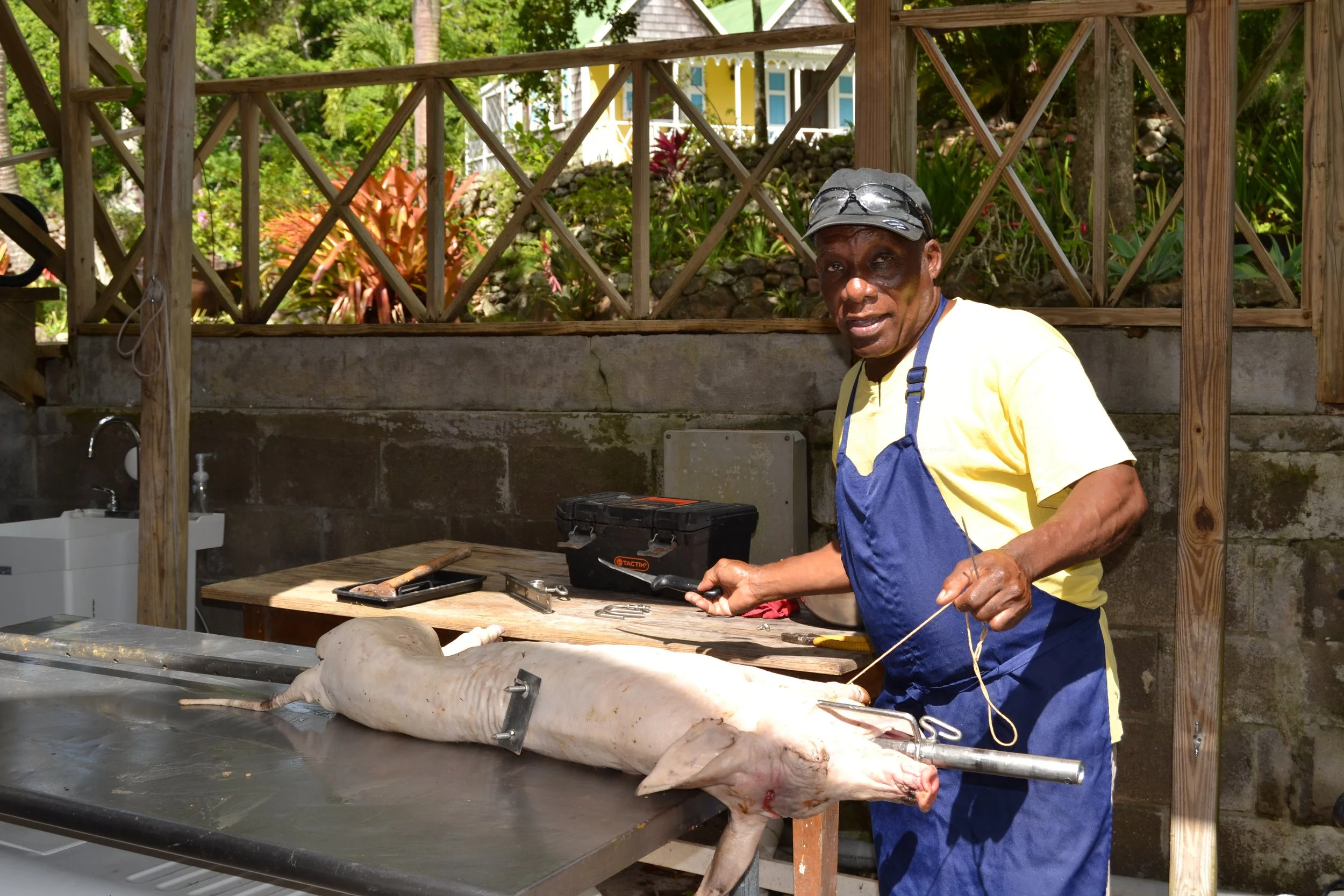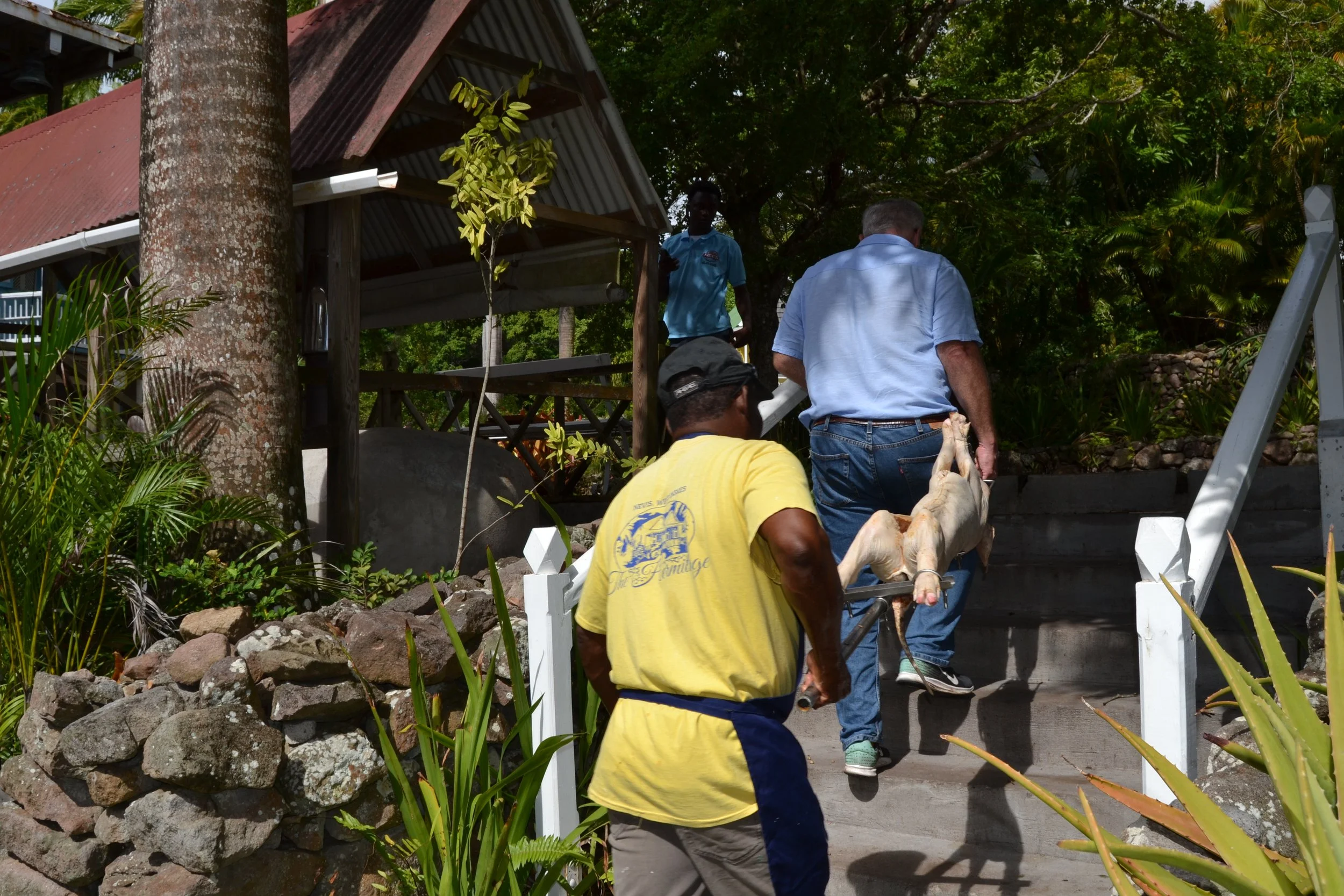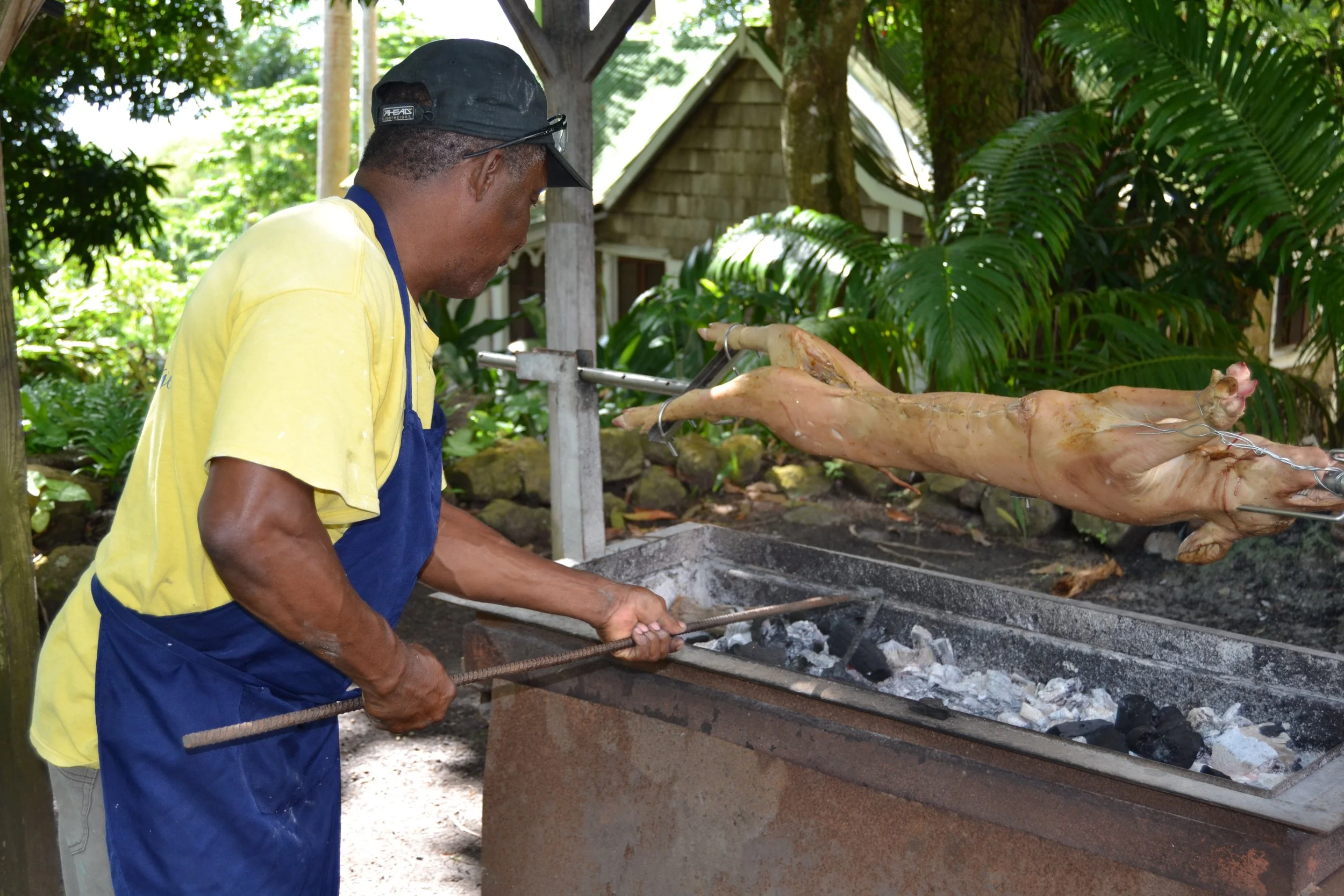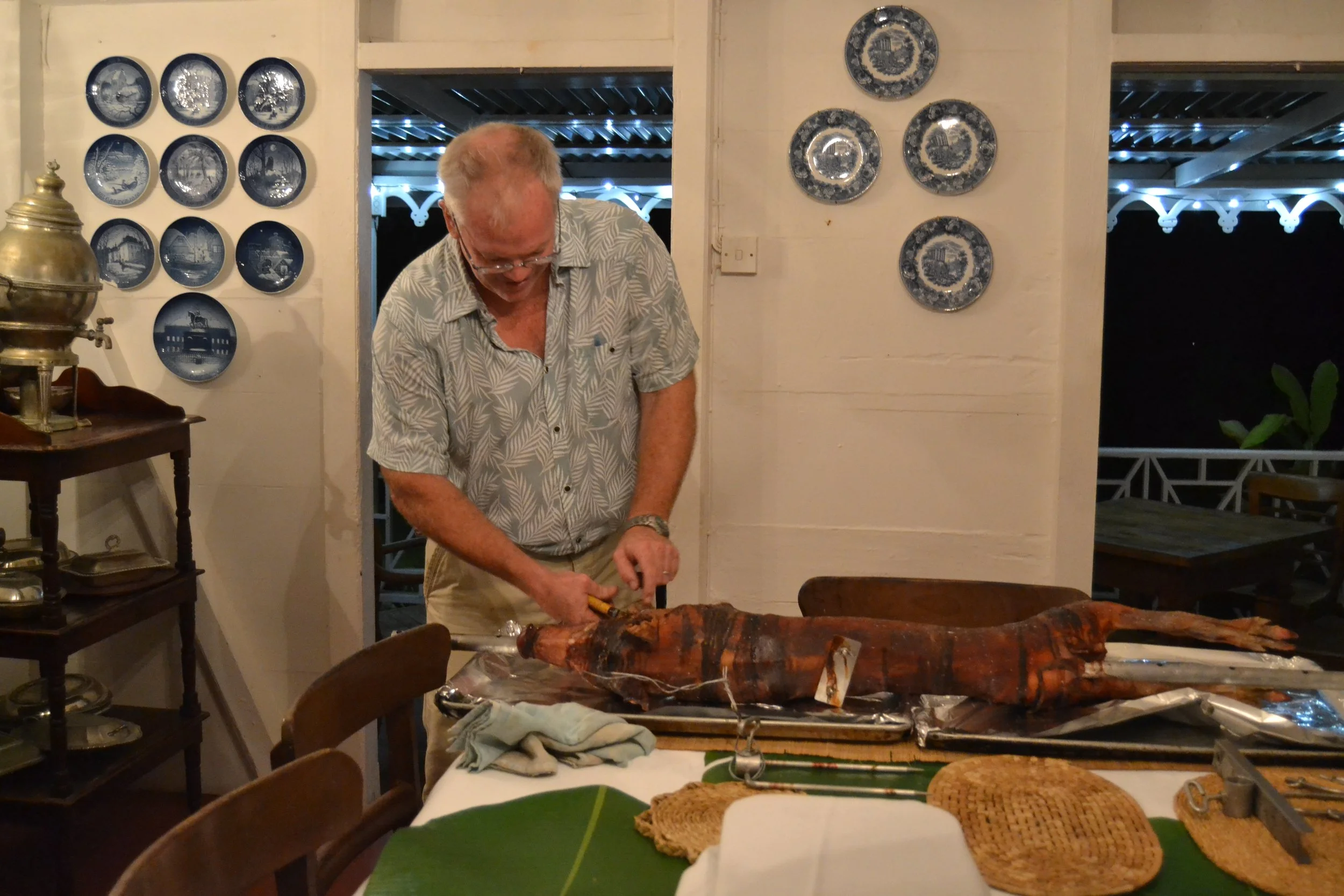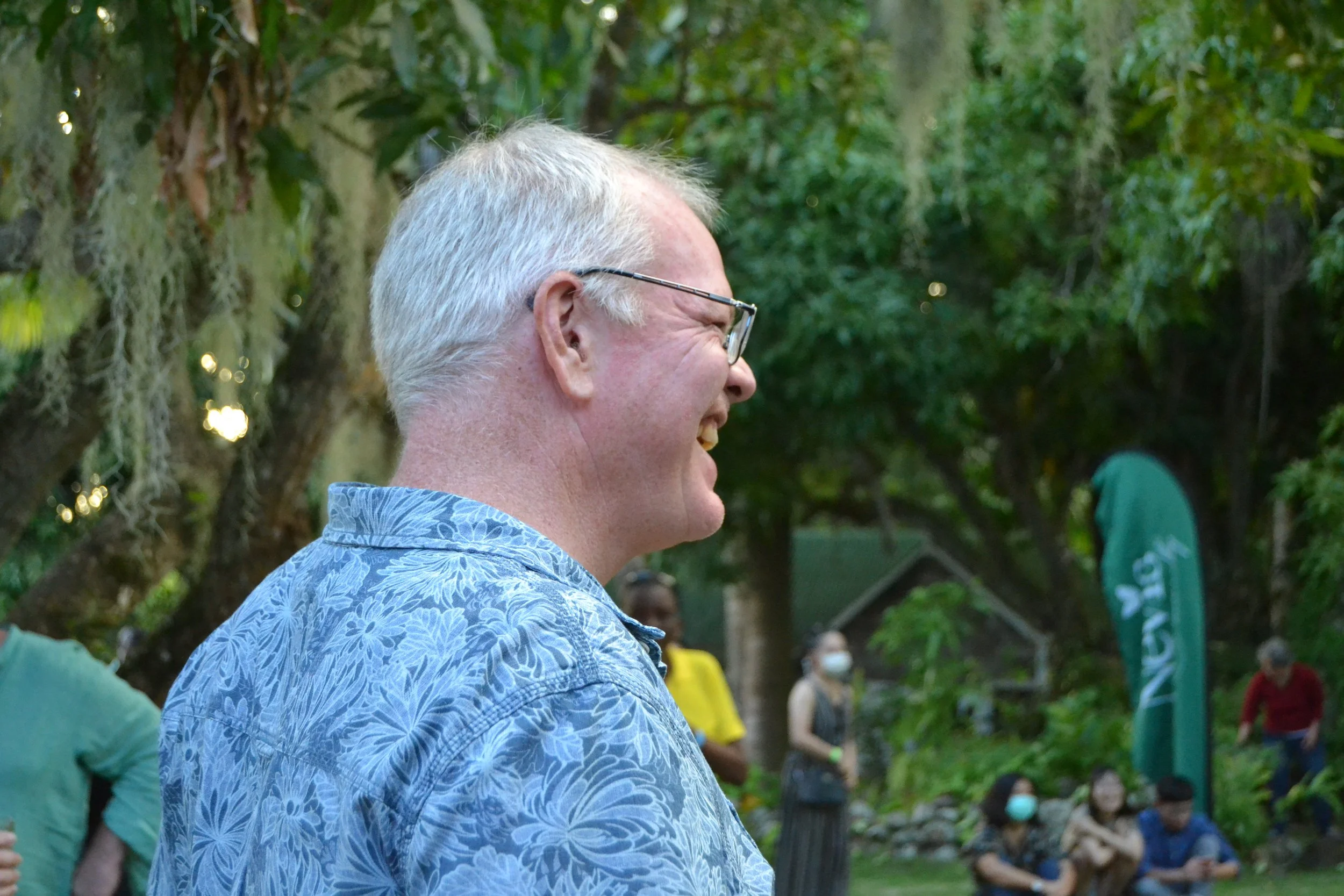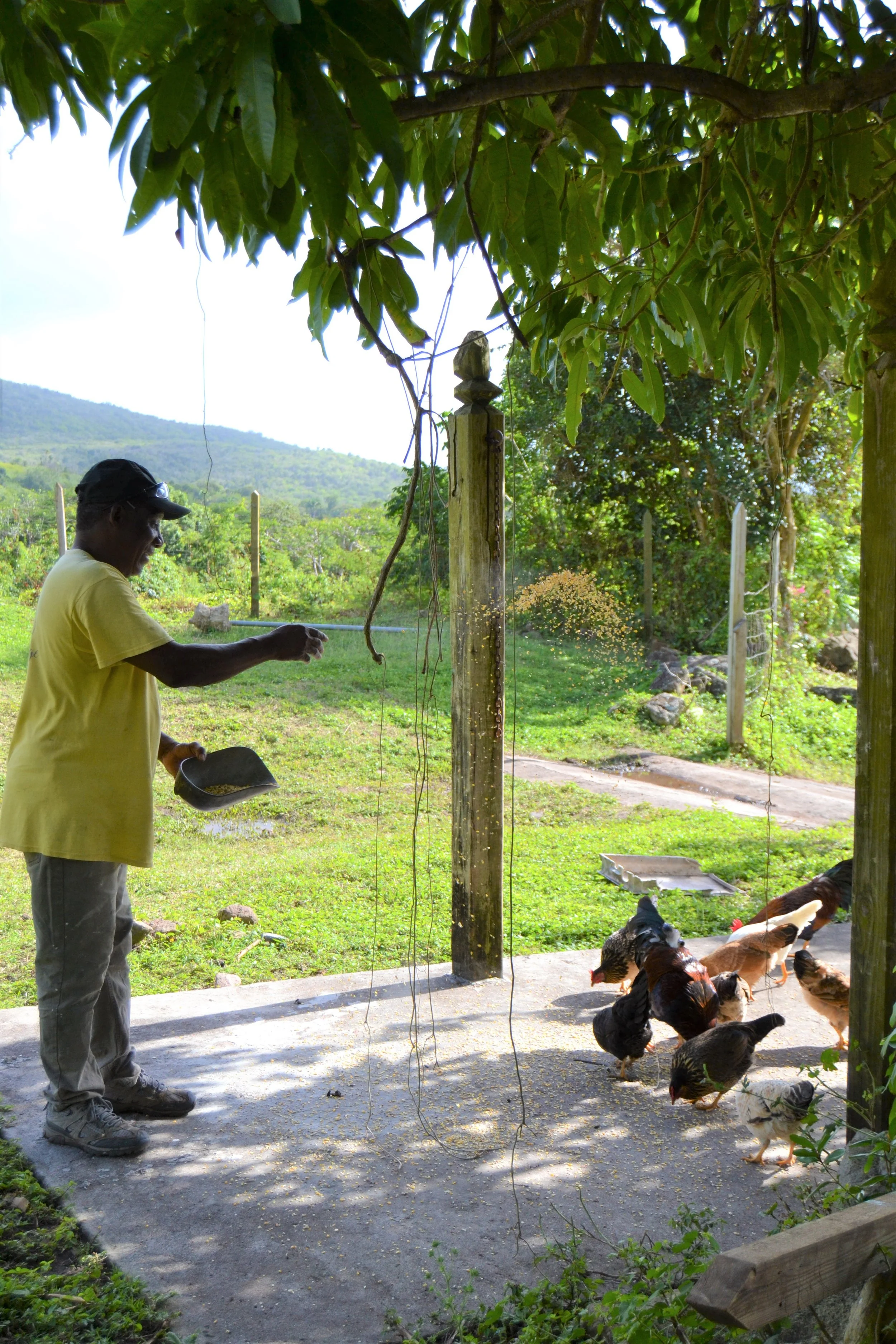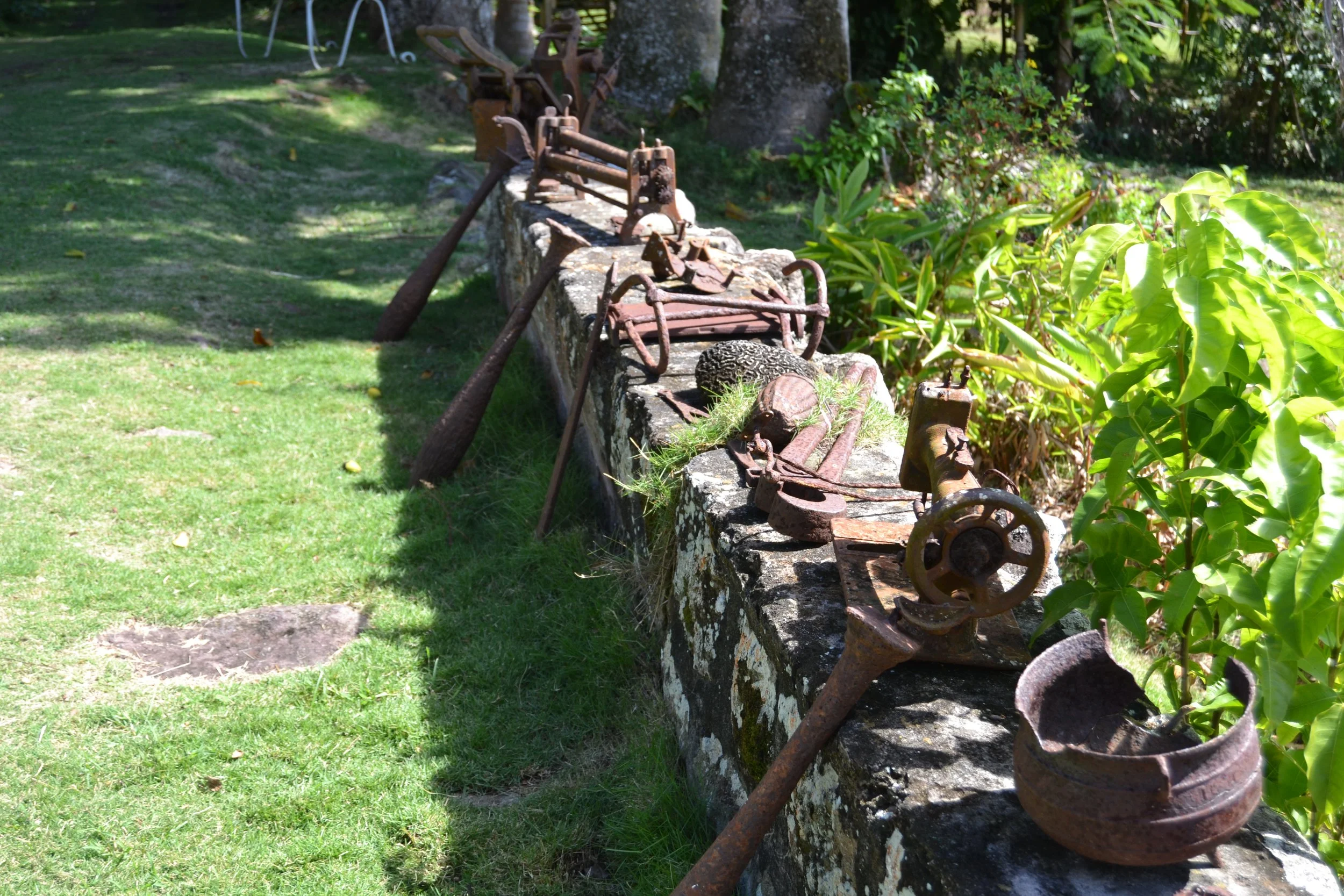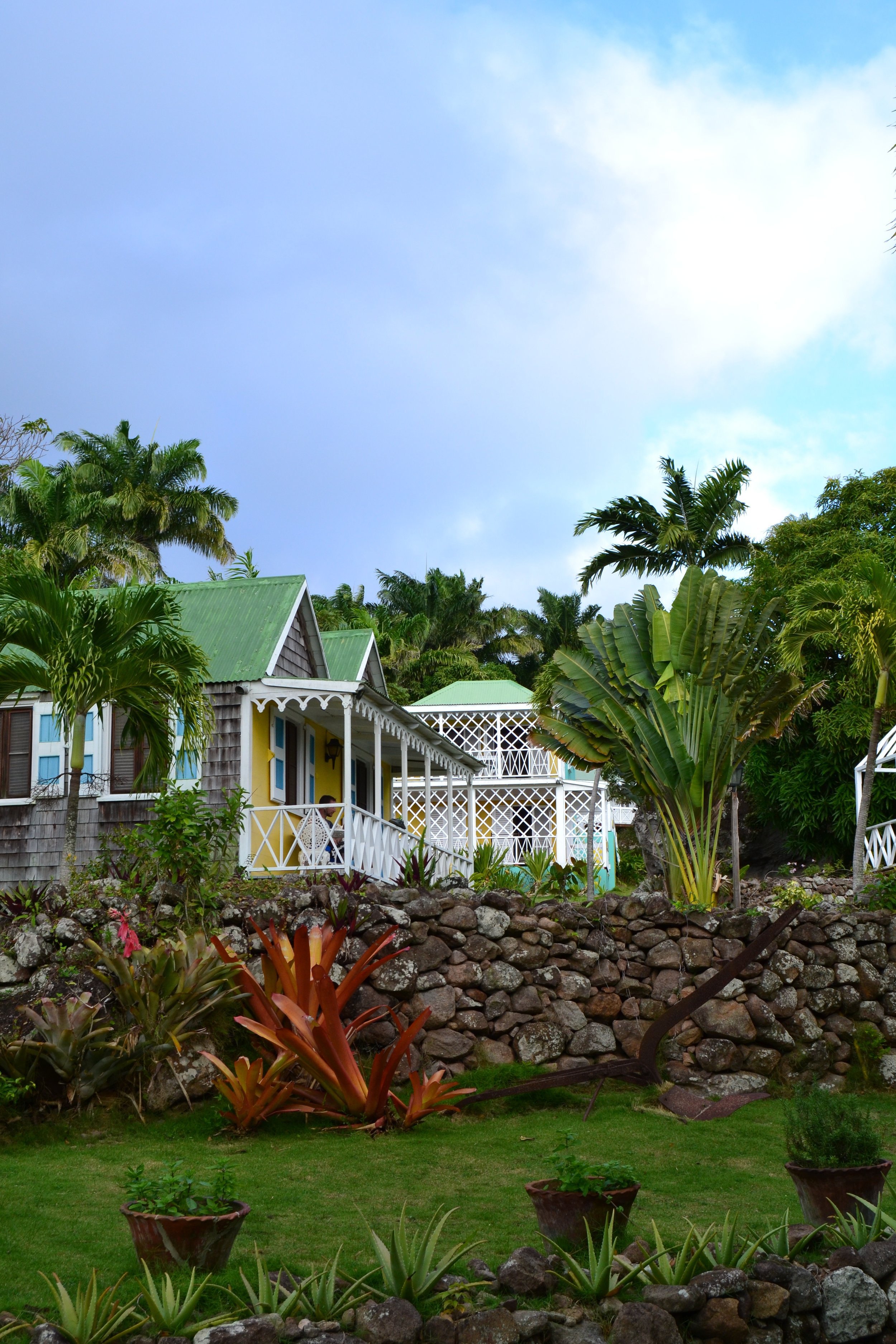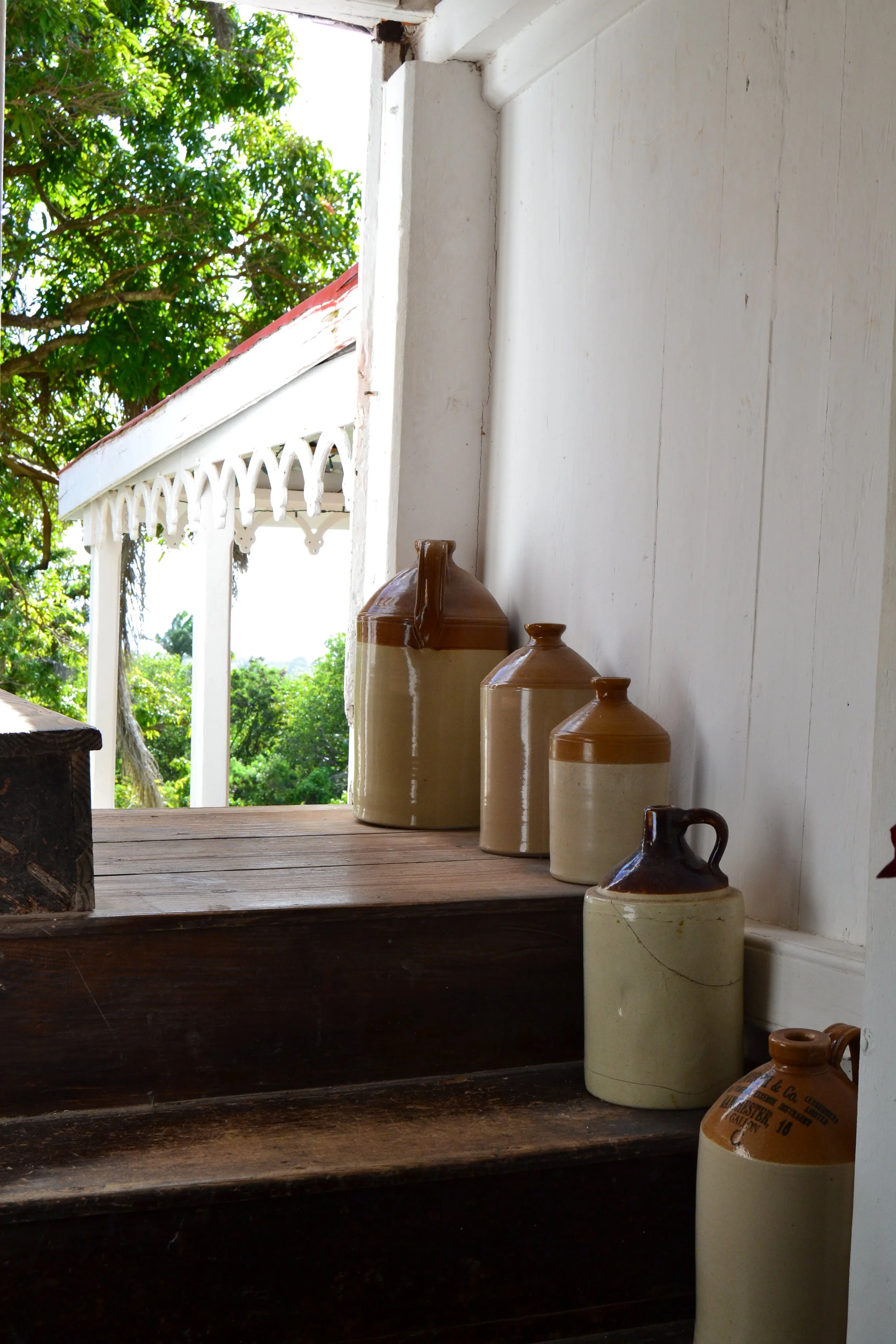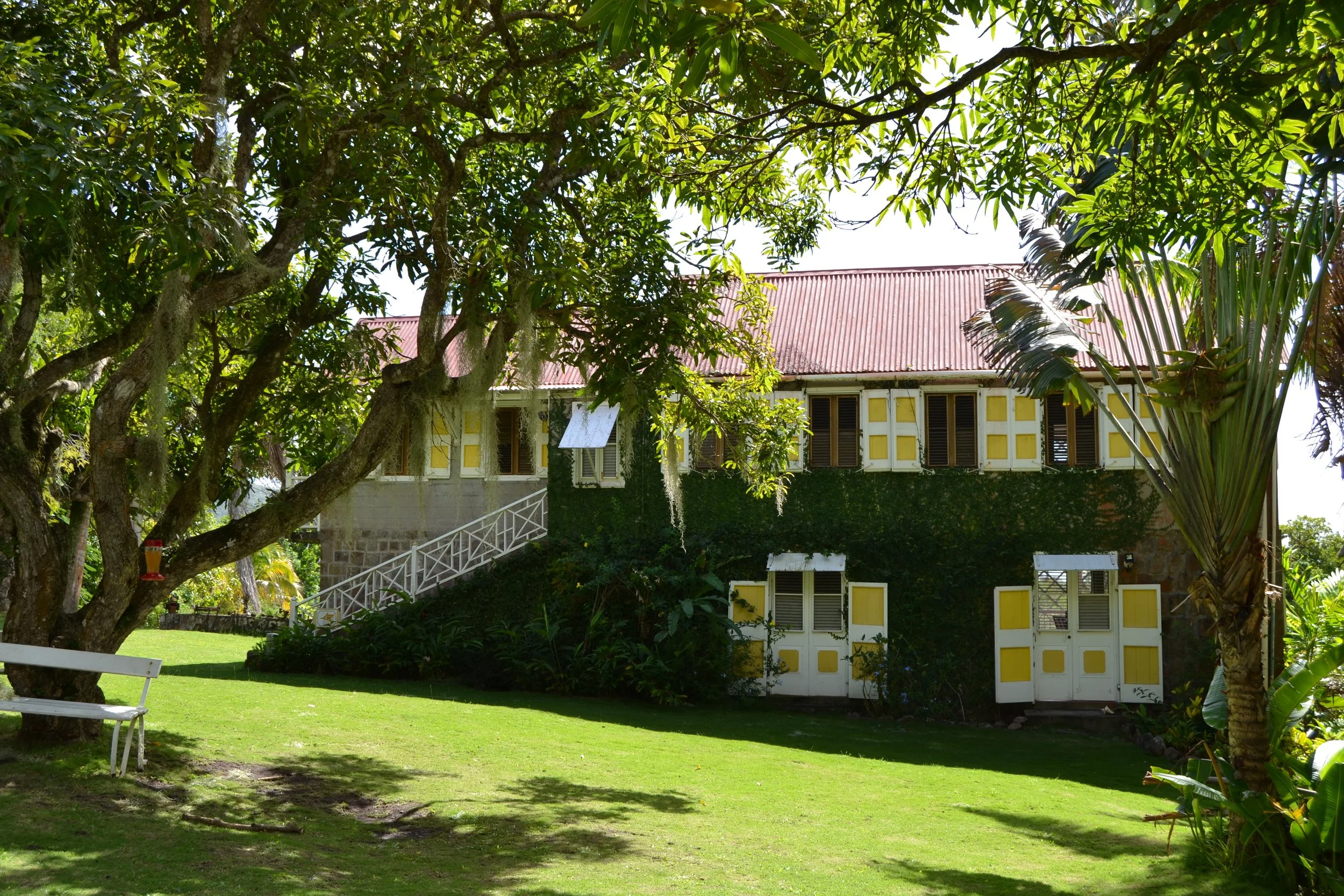Scents of Place: Food, Family, and Memory at The Hermitage
How shared rituals create a sense of belonging at one of Nevis’ oldest inn and restaurant.
Wednesday night is The Hermitage night. When you arrive you’re greeted by a smiling Richie Lupinacci, the head of the inn, in one of his signature pastel floral shirts. The scent of curry spices travel from the kitchen into the main house. The night starts with a strong rum punch topped with grated nutmeg. Reggae music plays while guests mingle around the decades-old wooden furniture. You’re chatting with someone you haven’t met yet, since it’s basically mandatory to introduce yourself to anyone you don’t know. No one is left a stranger when you visit the inn. Twinkling string lights illuminate the outdoor dining room as it starts to fill with people. Over the hum of the ceiling fans the chorus of peeper frogs belts out high-pitched calls as you wait for dinner.
Inside the kitchen, fit with terracotta tile flooring and pans hanging from the ceiling, you can smell the delicious greasiness of fry oil. Kimone Prentis, one of the head cooks, dunks pieces of breaded grouper and tanai fritters into the fryer, waiting to pull them out once they turn golden and crunchy. Kimone laughs with the other head cook, Cecelia Stanley, better known as Kressy. A waiter pulls fluffy onion and garlic rolls out of the oven and places them in hand-woven palm baskets for each table. Salads made from a rainbow of locally grown vegetables – tomatoes, cucumbers, avocados, and peppers – are tossed with mango and passionfruit dressings. The infamous rabbit pie, a signature dish of The Hermitage’s West Indian buffet night, glistens with egg-washed crust in a brown iron pot on the counter.
Kitchens in movies are often filled with a horde of swearing men in white chef’s coats throwing tiny tantrums about an imperfect sauce or garnish. Their surroundings look sterile, with towering equipment and tweezers to plate single pieces of microgreens onto stylized plates. Not here, not tonight. The Hermitage’s kitchen is filled entirely with women wearing bright pink shirts with The Hermitage scripted across the back, their braided hair covered with printed silk scarves. These are the same uniforms that some of them have worn for years. Their own penciled labels identify the containers of ingredients around the kitchen. Many of the recipes they make have been passed down from generation to generation of their own families. They laugh about the latest drama within their circle of friends and family, as most of them are sisters or cousins or mother-daughter duos. The atmosphere feels like a family cooking session at home.
The buffet table piled with some of the dishes (from center front, clockwise): mixed vegetable salad, roasted beets with orange, Gingerland-slaw, fried plantains with tomato, roasted pig, tanai fritters and Johnnycakes, rabbit pie, barbequed chicken, fried grouper.
Then it comes time to plate the dishes. Kressy piles roasted red beets with orange and Gingerland-slaw, named after the next village over, into large wooden bowls. Kimone fills brown clay pots made on the island by Newcastle Pottery to the brim with local cinnamon-spiced pumpkin, rice and beans, and candied carrots. They arrange the rum and brown sugar beef short ribs and rosemary barbequed chicken legs on white china platters. A waiter spoons sauces into serving dishes, from mango chutney to local hot sauce. The entire process looks like a choreographed routine without a single spill of sauce or slip up. The counter is covered with perfectly spiced and salted Eastern Caribbean foods alongside more unconventional dishes developed in that same kitchen years before. Despite the chatter of 30 guests in the dining room the women don’t seem fazed by the crowd of people they are about to serve. For Kimone and Kressy this is simply another night of cooking.
Once food is arranged on the table the centerpiece of the night arrives: the pig. Mervin Phillip, the head of grounds, prepared it earlier that day. First he patted the pig dry to ensure crispy skin. He then pulled off each hoof, tossing them back to the kitchen ladies, as everyone refers to them, to use for flavoring stocks and other dishes for the buffet. Next he tied up the legs, as they have to be pulled together to cook evenly. Finally the pig was ready for the spit, which had been heating up for an hour. The 30-pound animal roasted away for the rest of the day, turning round and round as the local hardwood coals crackled underneath. The covered fire pit stands at the center of the property, under a mango tree, allowing guests to watch the pig cook in anticipation. Now, six hours later, the pig’s crispy skin crunches as Kimone slices the meat.
This process has remained the same since the weekly buffets started at The Hermitage in the 1990s. Back then almost every hotel or inn on the island had a designated day of the week that was known to be the best night to visit. Tourists and expats traversed the circuit, eating or dancing each night at a different venue. That’s when the Lupinacci family, the owners of The Hermitage, decided to throw themselves into the mix, hoping to become another stop on the tour. “We were like the new kids on the block,” Richie explains. Buzz about the food and atmosphere of the Wednesday night West Indian buffets quickly spread, and the Lupinaccis found themselves hosting more and more guests. In recent years locals have started to come to the buffet, particularly to support the inn during the hardships of the pandemic when tourists were not allowed on the island. Now Wednesday night at The Hermitage is an institution for tourists, expats, and locals.
It’s not just the food, though, that makes Wednesday nights at The Hermitage so compelling. Your arrival here feels like coming home rather than being introduced to a new place. Sure, hotels everywhere try to welcome guests to their properties with warmth. You’re greeted with chocolates on your pillow and pleasantries from the front desk. The Hermitage sets itself apart with its attention to emotional connections – both between people and between people with food.
The staff spans two generations, and most staff members are related to at least one other person working at the inn. Cadiler Stanley, the innkeeper who makes the entire operation run, has worked at The Hermitage for 19 years, the longest of any employee. Her sister Imelda Stanley works as a morning shift cook. Kressy is Cadiler’s daughter, and so is Tazz-Ziel Bartlett, another cook in the kitchen who works alongside her aunt Melda. You can tell the women are family in the way they interact, poking fun at each other but always following up with a big squeezing embrace. Cadiler is always sneaking into the kitchen to check on Tazz-Ziel to make sure she’s hard at work or to hover over Imelda’s shoulder to see what she’s making. “I’m only supervising, but they don’t actually listen to me!” Cadiler jokes when Imedla starts to shoo her out of the kitchen.
Richie Lupinacci celebrates with guests and locals at the annual Christmas festivities at The Hermitage (see the Celebration gallery for more photos).
The inn’s success depends on these connections, which is why the Lupinacci family has always hired people who live in the neighborhood around The Hermitage, called Morning Star. When driving up the hill to the inn you’ll often see staff members walking or riding in cars to work together. In the kitchen you’ll hear dishwashers and cooks talking about upcoming family events or plans to get together at the weekend. And the glue that binds The Hermitage family is Richie, who spent his childhood at The Hermitage, starting to help with the pig roast process at age 16. Now, at age 49 and after many years spent with everyone who works there, Richie has taken over day-to-day operations of this business from his father, Richard Lupinacci. Richie looks after every inch of the property, ensuring that the entire inn is up to his standards. You’ll often find him sneaking bites of food from the large refrigerators in the kitchen or teasing the kitchen ladies. By the check-in desk you can hear him speaking on the phone with upcoming guests about reservations, as his office sits above. He’s often shadowed by his young daughters, Charlotte and Ava, as they trail behind him in the main house when he’s chatting with the staff who have become his extended family.
Richie’s Land Rover Defender parked up on the farm, next to the duck coops. The family has owned the car for many years, and people often honk to say hello to Richie when driving around the island.
The Lupinacci family also aims to differentiate The Hermitage from other hotels on the island by farming on the property. Mervin takes care of all the animals, which he says is his favorite part of the job. Each day he rides up to the farm area in Richie’s 30-year-old white Land Rover Defender, which creaks so loudly that it sounds like the bottom might fall out. The aroma of tobacco from Richie’s half-smoked cigar that’s clipped onto the dashboard mixes with the scent of the vegetable scraps piled in the back of the car. The Hermitage operates in a farm-to-table fashion, and the inn takes it a step further by making it “farm-to-table and back again,” as Mervin says. On a lush plot of land on the lower half of the property Mervin grows fruits and vegetables. The kitchen ladies in the kitchen use that produce daily, blending soursop and golden apples into fresh juices and roasting vegetables for dinner each night. Then Mervin packs up the scraps and peels from the produce, topping it off with water and extra grain if necessary. The pigs devour everything from watermelon rinds and carrot peelings to pulp from the squeezed juices. Once the pigs have grown large enough for a big buffet night, where the inn can serve up to 70 guests, they are taken to the local abattoir for butchering. The same happens with the rabbits for the famous pie. But Mervin’s favorite animals are the chickens, as they run to him when he makes his special call at feeding time. As they peck away at the grain he gathers their eggs, which will be used for breakfast the next day.
Each day Mervin drives up to the farm and lets out a special call, with all the chickens running to him to be fed.
The farm-to-table nature of The Hermitage is not only sustainable but demonstrates the inn’s ongoing dedication to honoring the island and its history, particularly as a former plantation. The main house is thought to be the oldest wooden building in all of the Caribbean. The structure is made from a hard wood called lignum vitae and has remained sturdy after hundreds of years on the property, which was under the possession of Pembertons, a family who owned slaves. When the sugar industry finally collapsed, the structure was left to transform as a part of a new, more positive legacy. And the Lupinacci family did just that.
While there are many other hotels on the island that are also former sugar mills or plantations, The Hermitage provides a more nuanced look at Nevisian culture. Eric Evelyn, the Honorable Minister of Culture, Youth, Sports, Community Development and Telecommunications and Information within the Nevis Island Administration, says that you do not get that type of commitment to localness at any other hotel on the island. The “signature local flavor and taste” that Evelyn describes is found not just in the food but in everything The Hermitage does – from its employment of entire families to its hosting of community celebrations. The Hermitage and the Lupinaccis embrace the Nevisian way of welcoming everyone and leaving no one a stranger.
So when each table is called one by one to serve themselves from the West Indian buffet, the Lupinaccis truly are welcoming you into The Hermitage way. While you circle the buffet, Kressy and Kimone describe each dish, as they’ve memorized the entire menu after cooking it each week for so many years. Everyone piles food on top of the white china plates. If you’re lucky, Kressy will give you a big slice of crackling to eat with your slabs of roast pork, finished off with a spoonful of mango chutney. And while other restaurants go quiet as diners eat, the dining room at The Hermitage stays boisterous as everyone praises the food. Richie makes sure to circle the room and check in on each guest, but no one ever complains. Richie's smile is almost as big as the guests’ as they take the final bite of the night into the rum-soaked bread pudding. You feel a sense of warmth and gratitude after an evening at The Hermitage – for the people you’ve met, for the food you’ve eaten, and for the sense of family that is apparent when you arrive. It is these connections that make Wednesday night The Hermitage night.

